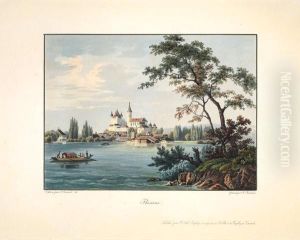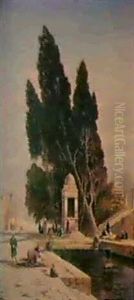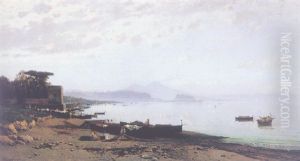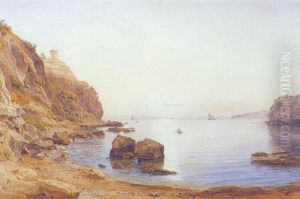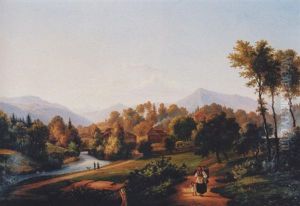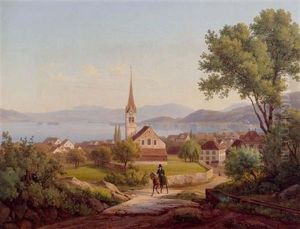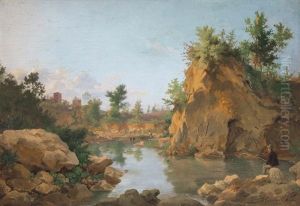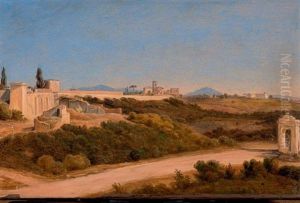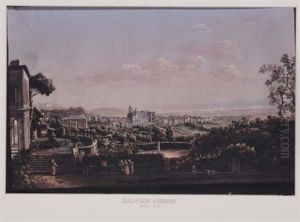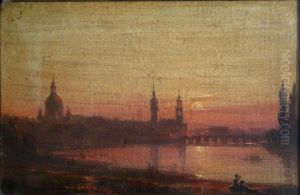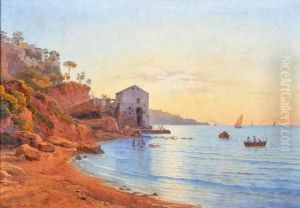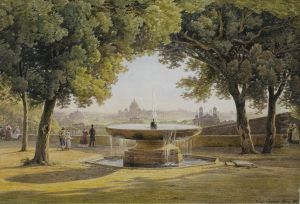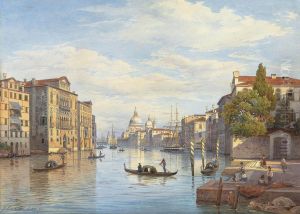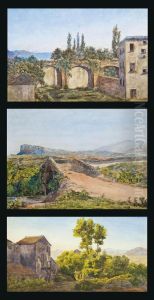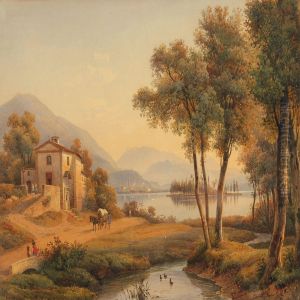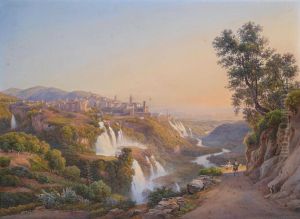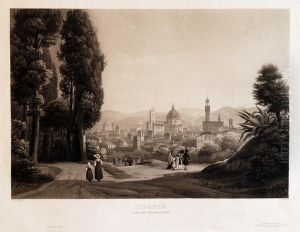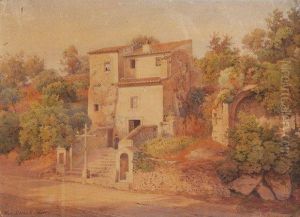Salomon Corrodi Paintings
Salomon Corrodi was a Swiss-Italian painter known for his landscape paintings and watercolors. Born in Zurich, Switzerland, on July 23, 1810, he was part of a family with a strong artistic background. His father, Hermann Corrodi, was also a painter, and his brother, Arnold Corrodi, became a well-regarded artist as well.
Salomon Corrodi initially trained under his father before moving to Italy to further his studies. He spent a significant amount of time in Rome, which was a hub for artists during the 19th century. Rome's historical ruins and the surrounding countryside provided endless inspiration for his works. Corrodi became part of the group of international artists residing in Rome, often referred to as the 'Roman Campagna' painters, who specialized in capturing the unique light and atmosphere of the Italian landscape.
Throughout his career, Corrodi traveled extensively across Europe and the Middle East. His travels influenced his artistic style, which incorporated elements from various regions he visited. Notable among his works are the landscapes of Italy, Egypt, and the Ottoman Empire, which were highly appreciated for their realistic depiction and attention to detail.
Corrodi's skill in watercolor painting was particularly admired, and he was commissioned by several notable patrons, including members of European royalty. His works were exhibited in major cities, such as Paris, London, and Vienna, and they contributed to the 19th-century interest in Orientalism.
Salomon Corrodi died on January 1, 1892, in Rome. His legacy lives on in the collections of various museums and in the continued appreciation of his skillful landscape paintings. His contribution to the field of landscape art remains significant, as he captured the beauty of the European and Middle Eastern landscapes with a masterful blend of realism and romanticism.
